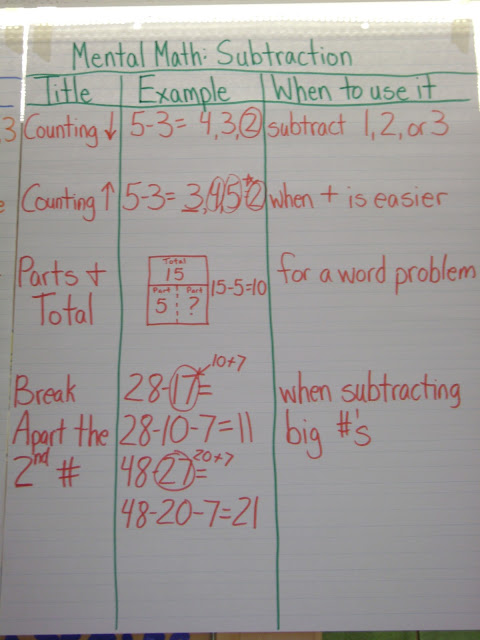On Monday, we created this anchor chart with our classes:
We also watched Brainpop!'s Rounding video and stopped before the Rounding Decimals part.
Students copied the anchor chart into their notebook onto their Frayer model anchor chart:
We also felt that it would help students to have a hundred chart with rounding tips, so they glued this chart from Super Teacher Worksheets into their notebook for this week, too.
Switching Groups Mid-Week
For the first time since starting math workshop, we changed our four math groups mid-week this week. We noticed certain students in the lowest group grasping estimation quicker than students in the low-medium group. Based on yesterday's closure activity and in-class observations at the teacher station, we swapped some students between the red (lowest) and yellow (low-medium) groups. For example, Johnny was in the red group but was catching on quicker than Suzy in the yellow group, so we switched the two. Today, Suzy received more support during teacher station because her peers were at the same instructional level. This change emphasized to us how important ongoing assessment and closure are to driving instructional decisions. This is truly differentiated instruction.
Another Math Workshop Board
Anchor charts from the year so far...
Join us next week for a Q & A with a guest blogger, a fourth grade teacher starting math workshop this year! :)
--Tabitha & Chloe









.jpg)
.jpg)